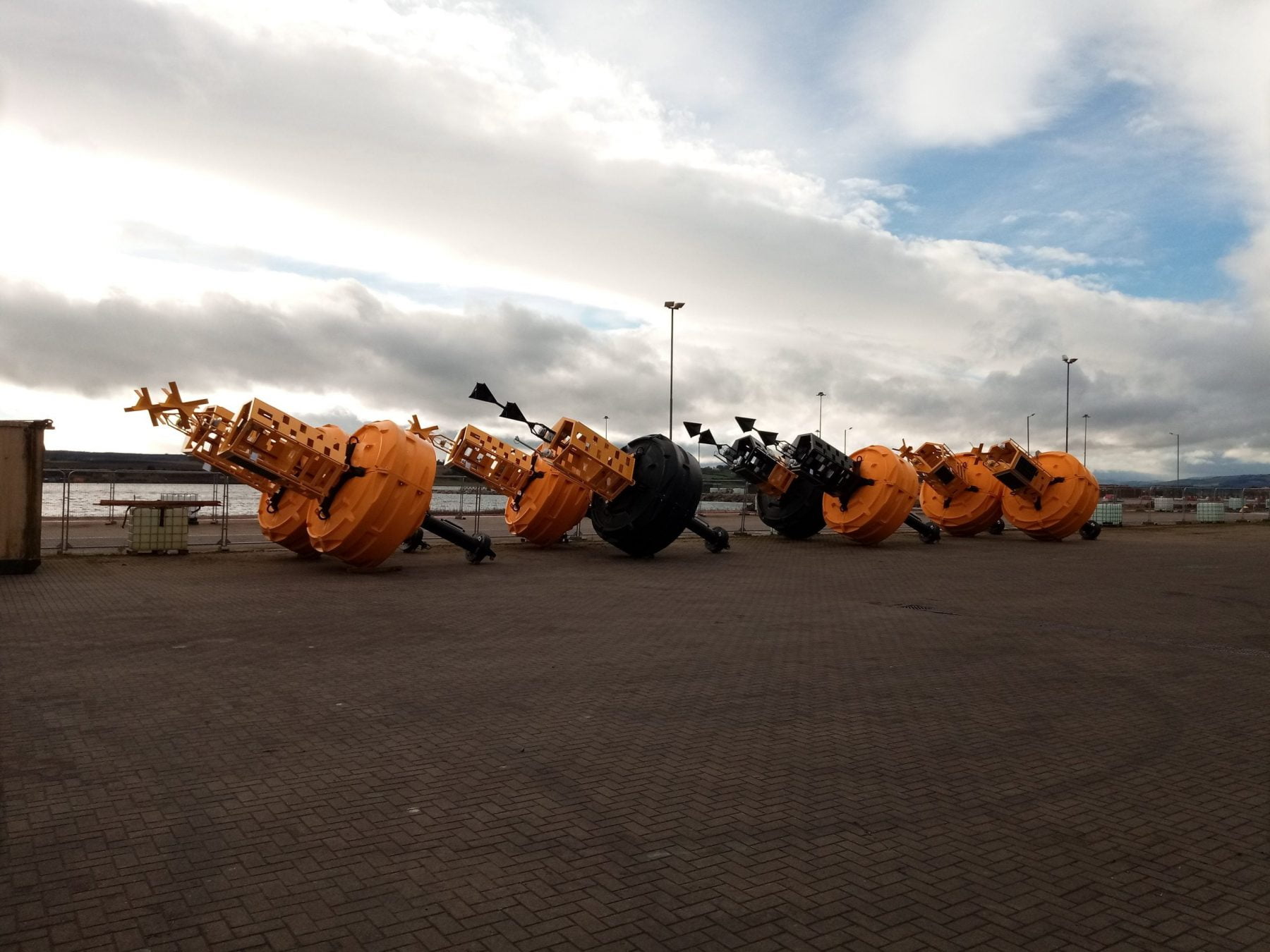To date, there are over 2,000 offshore turbines and an estimated 37 operational projects located off the coast of the UK.
Every year, these turbines and projects combined produce enough sustainable, clean energy to power over 15 million homes and reduce annual CO2 emissions by almost 27 million tonnes, according to RenewableUK’s Wind Energy Database.
But these turbines and wind farms require constant monitoring to ensure the maximum power output is maintained. As well as temperature, humidity, atmospheric pressure and wind, offshore conditions also present a number of other parameters which need to be taken into account such as waves and currents.
Challenging conditions
Monitoring equipment, including data buoys, plays a massive part in helping companies to understand the conditions of the site — notably if it is safe and if the operational parameters are suitable for the different vessels working there. This ensures they can continue to operate optimally around often-challenging conditions. Data buoys also allow companies to identify problems remotely, helping to significantly reduce maintenance costs.
Every data buoy project is different, depending on the end requirement. But it is vital the buoy is able to withstand the environment it is deployed in, with factors such as water depth, waves, current and wind speed dictating the size of the buoy and the required power supply. The majority of data buoys will predominantly use solar panels to recharge their battery banks, but some will even use wind turbines, due to the massive amount of power needed.
Installing buoys in the Moray Firth
As the UK and Ireland’s leading supplier of aids to navigation, Hydrosphere has been involved with the offshore renewable energy industry since the installation of the first offshore wind farm in 2003.
More recently, the supplier worked on the installation of a ring of buoys — two of which are supplying wave, current and meteorological data — around the Moray East Offshore Wind Farm in Scotland. Located 13.5 miles from shore in the Moray Firth, the highly competitive wind project will provide an abundant supply of low-carbon electricity to improve the UK’s supply security.
The project has been developed by Spanish renewables company EDP, a global leader in the renewable energy sector and the world’s fourth-largest wind energy producer. EDP first approached Hydrosphere and its competitors looking for both navigation buoys and data buoys. But why not combine the two?
Two in one
Using the existing Mobilis JET 9000, Hydrosphere redesigned the navigation buoy, installing a power supply and integrating a communications package with a combination of sensors to create a unique system.
The core structure of the JET 9000 is suitable for use in offshore and deep-water locations where a highly visible and robust navigation buoy is required — while the communications package provides a range of meteorological data including wind direction, wind speed, dust speed, dust direction, atmosphere pressure, temperature and humidity. The data buoy also records current direction and speed, wave height, significant wave height, wave period, wave direction and tells the position of the buoy.
From receiving the order to the buoys being deployed, the project took approximately three to four months and Hydrosphere will continue to work with Moray East over the next three years to ensure the ongoing success of the buoys deployed there.
Advanced weather forecasting
Using iridium satellite communication, the buoys’ sensors report back through Port-Log, a web interface that displays environmental data from a range of different monitoring systems. Far more specific than the type seen in television forecasts, this data is then forwarded to commercial organisations looking to offer their specialist weather forecasting services to the offshore wind industry or oil and gas companies working offshore.
At present, the data is being used by StormGeo, one of the largest and fastest-growing global providers of weather intelligence — and a trusted partner for companies requiring decision support for weather-sensitive operations. Weatherquest, a private weather forecasting and weather analysis company, is also currently using the data provided by the buoys.
The future of offshore renewables
Hydrosphere had previously supplied similar buoys to other ports and harbours, meaning the product had already been thoroughly tried and tested: a key reason Moray East chose to work with the supplier. However, every buoy is different, and it was important to customise these new buoys to suit the environment.
By combining the navigation and data buoy, Hydrosphere’s solution means fewer buoys are needed — helping to reduce the time and cost of maintenance and presenting an exciting new opportunity for the use of buoys in monitoring offshore renewables.
As the renewable energy industry continues to grow and more offshore resources are developed, significant investment in data buoys will be crucial to help reduce costs and improve operational efficiency. These environmental data monitoring tools will play a key role in making offshore renewables, such as wind farms, a success in the years to come — as data buoys help to keep the renewable energy industry turning.








